THE LOST INNS OF ALRESFORD
by DIGBY GRIST
In the first number of Alresford Displayed I concluded a paper on the inns of the town with an assurance that one day there would be a paper on the inns which have gone. Now the task is made easier by Isabel Sanderson's series of 'Dwellings in Alresford', the references to which I have made clear by the book and page number in each instance. Beer is mostly water. Good water makes good beer. Spring water filtered through chalk makes very good beer. If the countryside grows good barley and there is an adequate supply of hops within a day's carting distance, the conditions are perfect for prime brewing. Alresford fulfils all these requirements and, acting on the belief that you can't have too much of a good thing, the town once had 19 pubs for a population of 1600 souls and the beer was brewed on the premises or very nearby. And yet there is no evidence that our town was or is a drunken place. Today beer drinking is connected with leisure - an after-work activity. In the past, beer was part of the staple diet. Beer with bread and bacon, kept man fit and was a less dangerous drink than water for in its production the liquor mixed with hops had to be boiled, which killed the harmful bacteria.
The cup of tea which you give to the chap who comes to mend the Hoover today would have been an impossible luxury in days gone by. In those days you gave the labourer beer. Old churchwardens' books are full of the evidence - 'paid for beer for the workmen at sundry times .... 19s 10d' : 'to the carter from Alton, beer 4d' : 'beer for the bellringers' etc., etc.
Although private people brewed their own beer, just as they do today, it was more convenient for the sale of the commodity to be centralised in the same way as meat was handled by the butchers. But while meat after purchase needs to be cooked, beer is ready for consumption where it is bought, and, as the drinking of beer is a convivial occupation, so bar parlours became cheerful places where those who came to buy drank a mug before moving on.
Because Inns provided accommodation for strangers and travellers, the casual local calling for a drink tended to loiter in conversation with the interesting company amongst whom he found himself. Thus, in addition to supplying liquor Inns became places where news and views were exchanged and in towns like ours with a great wool market tradition, they were the main source of up-to-date opinion and information from travellers. At Alresford, which had no public halls, the Inns became more than just places for casual talk - they became centres for discussion and debate and for the meeting of open and closed societies. Talking is thirsty work and locally brewed ale is heady stuff which needs 'blotting paper'. Soon Innkeepers in Alresford developed into suppliers of cooked food, following the example of Crowleys in Alton who first offered a sandwich with a glass of beer. It was a short step to becoming providers of specialised entertainment as well. We have seen how The Cricketers offered cock-fighting and The Running Horse - bull baiting. Inn keeping was becoming a competitive business. Our lost Inns are, for the most part, those which were unable to cater for the changing leisure activities of the immediate locality.
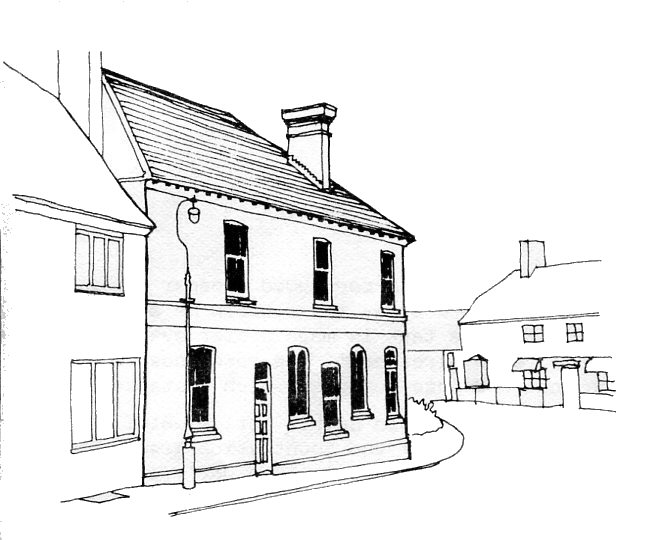 In the old days, as the traveller crossed the Bishop's Weir into
Alresford from the north he would see that he had the choice of the
Globe or the Stag (now Evans the Family Butchers. I.S. I p41). Soon
after the 1689 fire, Thomas Clarke fixed a furnace for brewing in one
of the lower rooms of an extension he had made on the east side of the
original premises and by 1743 the Inn was referred to as the Stag's Head.
It was fighting a losing battle with its rival across the road for its
back windows looked out on the public washing place, which in 1674 was,
'of free access to all to wash and do other needful and necessary business'
and just beyond that was the tanyard from which would have risen a most
abominable stench. It says much for the strong stomachs of the patrons of
the Stag that they accepted these handicaps until the beginning of this
century when the licence lapsed and the property came into the hands of
the Evans family.
In the old days, as the traveller crossed the Bishop's Weir into
Alresford from the north he would see that he had the choice of the
Globe or the Stag (now Evans the Family Butchers. I.S. I p41). Soon
after the 1689 fire, Thomas Clarke fixed a furnace for brewing in one
of the lower rooms of an extension he had made on the east side of the
original premises and by 1743 the Inn was referred to as the Stag's Head.
It was fighting a losing battle with its rival across the road for its
back windows looked out on the public washing place, which in 1674 was,
'of free access to all to wash and do other needful and necessary business'
and just beyond that was the tanyard from which would have risen a most
abominable stench. It says much for the strong stomachs of the patrons of
the Stag that they accepted these handicaps until the beginning of this
century when the licence lapsed and the property came into the hands of
the Evans family.
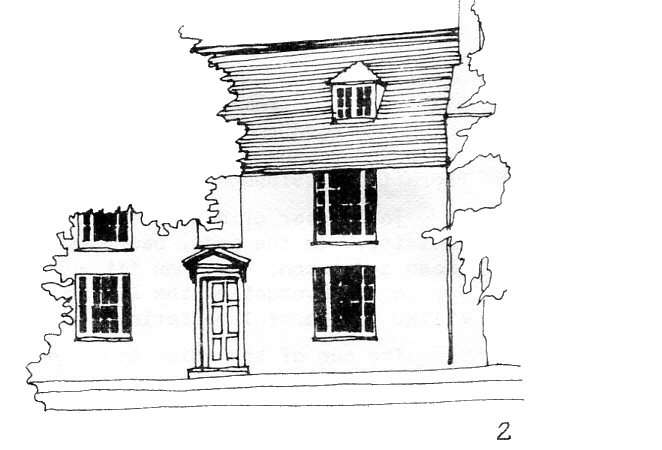 A short walk up the east side of Broad Street is No.42, now the home
of Robin Gorham Esq., and built on part of the site previously occupied
by LQ Hart [I.S. I p47} which was possibly the oldest Inn in the town.
It had certainly been in existence for a long time when it was recorded
in the 1552 Survey as The White Hart whose landlord John Okeley had 'an
ewer and laver attached by a chayne' at which to wash your hands as you
came in from market. Inside - in addition to the beer - was a 'sette of
men' and 'two playing tabulls'. The medieval inn was burnt down in the
Great Fire and in 1793 No.42 was the private house of John Barnard, one of
the most important of the town's worthies.
A short walk up the east side of Broad Street is No.42, now the home
of Robin Gorham Esq., and built on part of the site previously occupied
by LQ Hart [I.S. I p47} which was possibly the oldest Inn in the town.
It had certainly been in existence for a long time when it was recorded
in the 1552 Survey as The White Hart whose landlord John Okeley had 'an
ewer and laver attached by a chayne' at which to wash your hands as you
came in from market. Inside - in addition to the beer - was a 'sette of
men' and 'two playing tabulls'. The medieval inn was burnt down in the
Great Fire and in 1793 No.42 was the private house of John Barnard, one of
the most important of the town's worthies.
 A few doors further up Broad Street the entrance labelled as the
George Yard marks the position of the town's most historic Inn, The
George. This property which belonged to Winchester College before 1400
was chosen by the College as the site for their Angel Inn in 1415.
Christina Totterne was the innkeeper, Thomas Wolfrow was the carpenter
and Thomas Draycott of Basingstoke was commissioned to paint the sign.
However, before the sign could be erected Christina asked if the name
could be changed to The George in celebration of the assistance given by
St. George to Henry V and hi& men at the battle of Agincourt in 1415.
Never can an inn-sign have better 'provenance' and The George it remained,
being the rendezvous for many bailiff and burgesses' suppers of turtle
soup and venison until it was sold without its license by the College in
1927.
A few doors further up Broad Street the entrance labelled as the
George Yard marks the position of the town's most historic Inn, The
George. This property which belonged to Winchester College before 1400
was chosen by the College as the site for their Angel Inn in 1415.
Christina Totterne was the innkeeper, Thomas Wolfrow was the carpenter
and Thomas Draycott of Basingstoke was commissioned to paint the sign.
However, before the sign could be erected Christina asked if the name
could be changed to The George in celebration of the assistance given by
St. George to Henry V and hi& men at the battle of Agincourt in 1415.
Never can an inn-sign have better 'provenance' and The George it remained,
being the rendezvous for many bailiff and burgesses' suppers of turtle
soup and venison until it was sold without its license by the College in
1927.
 Opposite to the George, at the house now known as the Old Post House
U.S. Stiles Esq.) was the Anchor [I.S. IV. p21J. This Inn was probably
destroyed in the 1689 fire and rebuilt as a private house. The splendid
cellars are ample evidence of its use as an Inn, with a fine pitch for the
fairs and markets of Broad Street.
Opposite to the George, at the house now known as the Old Post House
U.S. Stiles Esq.) was the Anchor [I.S. IV. p21J. This Inn was probably
destroyed in the 1689 fire and rebuilt as a private house. The splendid
cellars are ample evidence of its use as an Inn, with a fine pitch for the
fairs and markets of Broad Street.
That's four 'lost inns' and we haven't left Broad Street yet for on
the corner stands the handsome building, much in need of repair, of which
the Wessex Pharmacy forms part. This was once The New Inn (I.S. II p16)
which the Wallace family deeds show to have been an Inn long before 1767.
It must have been an important stopping place for travellers for the 1685
inventory of Robert Barnard specifically names the rooms you could sleep
in the 'Rose', the 'Lion' or the 'Star' and have a game of Shoufullboard
(memory of ship-board life;) downstairs in the 'Fleur de Lys'.
where the Community Centre now stands was The Fox, a registered Inn
and lodging house in 1685. It rose from the ashes of the great fire as
The Rose and Crown and remained a pub with a doubtful reputation (it was
too close to the sanctuary of the churchyard as an escape hatch for evil
doers] until 1865 when the Alresford Market Company pulled it down to
make way for their Market Hall and Assembly Rooms. Its last landlord
was a Dorey, one of the longest surviving names amongst Alresford citizens.
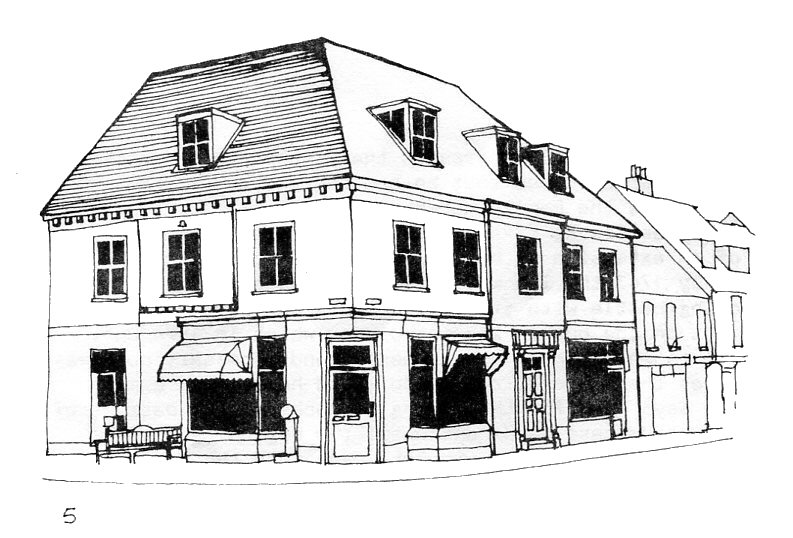
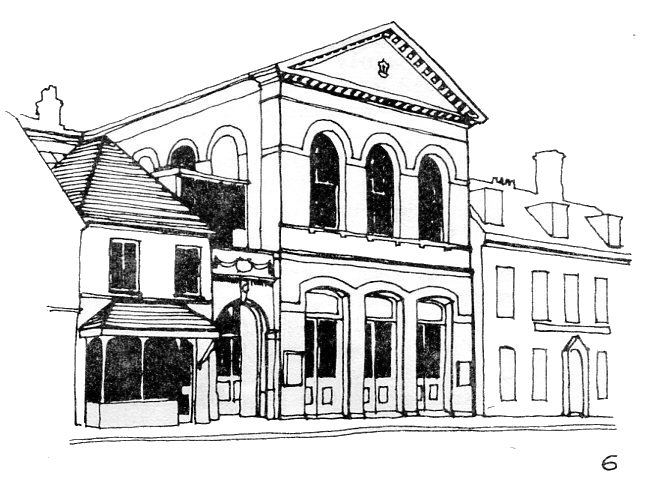
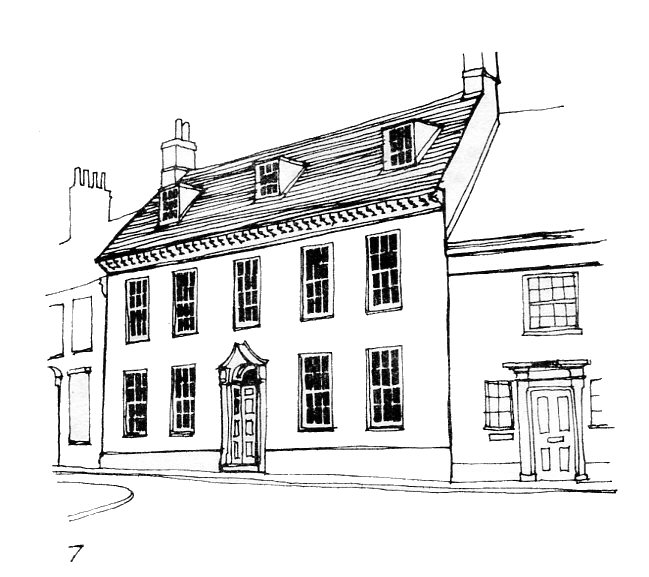 A few doors up and into East Street is The Lindens, the home of Mrs.
Barbara Galloway, once The Golden Lyon [I.S. II p68]. It was certainly
an Inn in 1668 but suffered in the fire and was rebuilt by John Wilkins
as a private house with its own brewhouse and its history owes more to
its distinguished private owners than to its years as an Inn.
A few doors up and into East Street is The Lindens, the home of Mrs.
Barbara Galloway, once The Golden Lyon [I.S. II p68]. It was certainly
an Inn in 1668 but suffered in the fire and was rebuilt by John Wilkins
as a private house with its own brewhouse and its history owes more to
its distinguished private owners than to its years as an Inn.
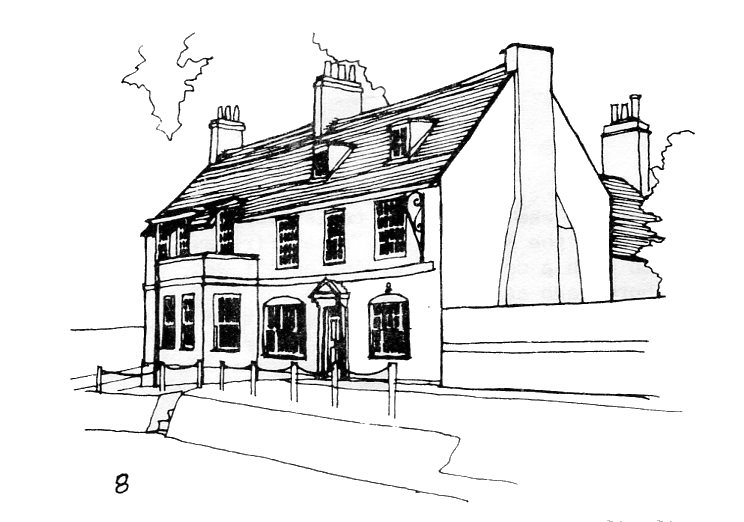 Go up to the end of East Street and you come to The Old Sun [I.S.
Ill p44) which John Arlott Esq. converted into a private house from The
Sun Inn in 1961. With its important position on the Bramdean Way [now
Sun Lane] it has probably been a stopping place for drovers for a very
long time, but the first evidence we have of a landlord is in 1713, when
John Stratton married Ann Ings. Like so many of the Alresford innkeepers
this one had his own brewhouse and the landlord of 1770 got into trouble
with the Bailiff's ale-taster for having an inaccurate quartern measure.
However, his successors kept on the right side of both Church and Law by
providing 'Wine for the Sacrament' and a long series of Jury Dinners.
Go up to the end of East Street and you come to The Old Sun [I.S.
Ill p44) which John Arlott Esq. converted into a private house from The
Sun Inn in 1961. With its important position on the Bramdean Way [now
Sun Lane] it has probably been a stopping place for drovers for a very
long time, but the first evidence we have of a landlord is in 1713, when
John Stratton married Ann Ings. Like so many of the Alresford innkeepers
this one had his own brewhouse and the landlord of 1770 got into trouble
with the Bailiff's ale-taster for having an inaccurate quartern measure.
However, his successors kept on the right side of both Church and Law by
providing 'Wine for the Sacrament' and a long series of Jury Dinners.
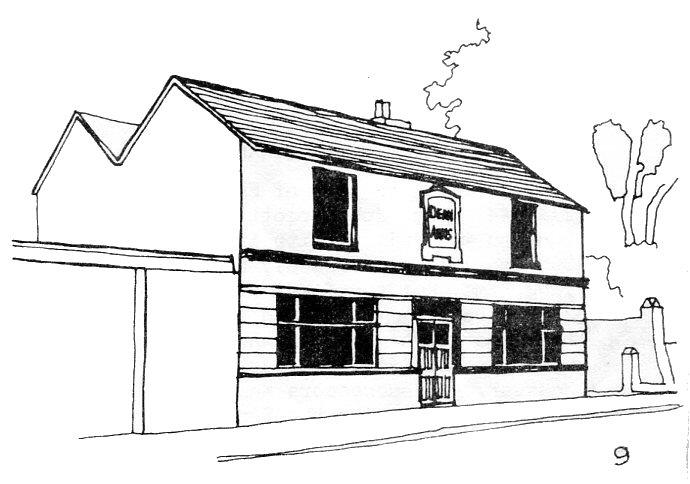 It is time to go to the bottom of West Street and even into the
Dean where The Dean Arms was the last Inn to have been built in the town.
It probably had the specific task of quenching the thirst of the workers
at the Gas Works established there in 1855 and didn't long outlast the
disappearance of these customers. We are in the midst of the empire of
brewing family of Hunt and three Inns have gone from the bottom of West
Street opposite to the site of their brewery. There was a Globe, [where
the Co-op now stands] as long ago as 1566. A little further up most of
us can remember The Volunteer Arms (now The Clipper stationery shop).
This Inn started life as The White Hart and had its name changed to The
Volunteer Arms after a spirited meeting on The Defence of the Country was
chaired there by the then Lord Ashburton in 1859. The 16th Hampshire
Volunteer Rifle Company was formed the following year with its drill hall
occupying the premises of the British School in the Dean [now used by Wild
Bros., Builders). It was a short walk to their pub for the volunteers
after a drill night and they would be proud to show off their red jackets
with black facings and their blue glengarry bonnets with the red tuft
cocked at a rakish angle. Where Oliver's fruit, flower and vegetable
shop now stands was The Dolphin, which seems to have been a quiet house
with the landlord ekeing out his modest existence with a secondary job;
one was a basket maker, another dealt in timber.
It is time to go to the bottom of West Street and even into the
Dean where The Dean Arms was the last Inn to have been built in the town.
It probably had the specific task of quenching the thirst of the workers
at the Gas Works established there in 1855 and didn't long outlast the
disappearance of these customers. We are in the midst of the empire of
brewing family of Hunt and three Inns have gone from the bottom of West
Street opposite to the site of their brewery. There was a Globe, [where
the Co-op now stands] as long ago as 1566. A little further up most of
us can remember The Volunteer Arms (now The Clipper stationery shop).
This Inn started life as The White Hart and had its name changed to The
Volunteer Arms after a spirited meeting on The Defence of the Country was
chaired there by the then Lord Ashburton in 1859. The 16th Hampshire
Volunteer Rifle Company was formed the following year with its drill hall
occupying the premises of the British School in the Dean [now used by Wild
Bros., Builders). It was a short walk to their pub for the volunteers
after a drill night and they would be proud to show off their red jackets
with black facings and their blue glengarry bonnets with the red tuft
cocked at a rakish angle. Where Oliver's fruit, flower and vegetable
shop now stands was The Dolphin, which seems to have been a quiet house
with the landlord ekeing out his modest existence with a secondary job;
one was a basket maker, another dealt in timber.
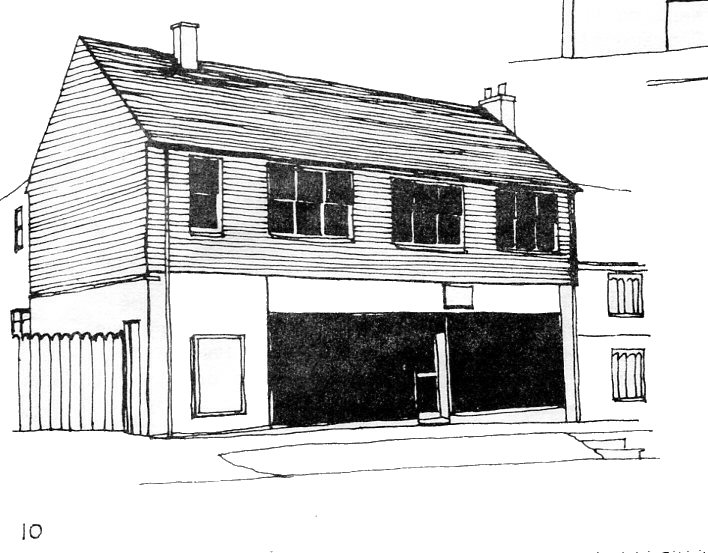

Finally, opposite The Dolphin on the site of Coquette was the Queen's Tap, which the late Mrs. Baker remembered as the place where, as a child she peered through the window and saw the patrons sitting on up- turned barrels. This pub was known locally as 'The New Found Out'. This unusual name was also that of an early form of bioscope. It is not beyond the bounds of possibility that - just as today's-Inns offer the 'one-armed bandits' for the entertainment of their customers - the Queen's Tap offered the simpler delights of a peep-show.

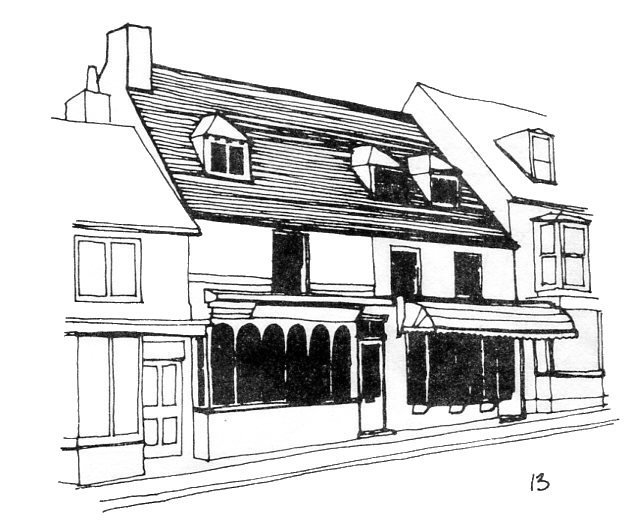
There then are the thirteen lost inns of the town; though on reflection, I might claim that they are no longer lost but 'New Found Out' .
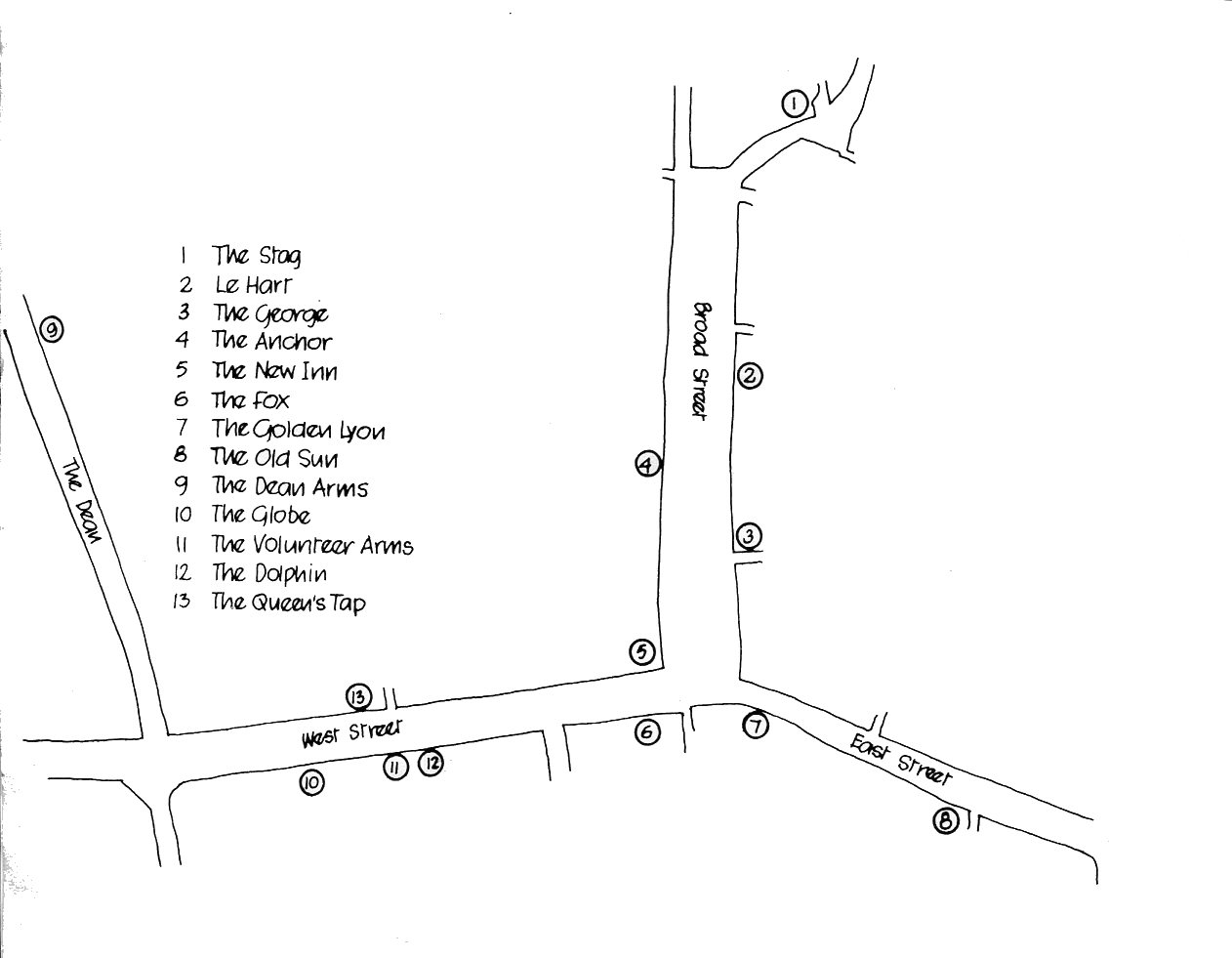
Copyright: D.A. Grist, 1980.